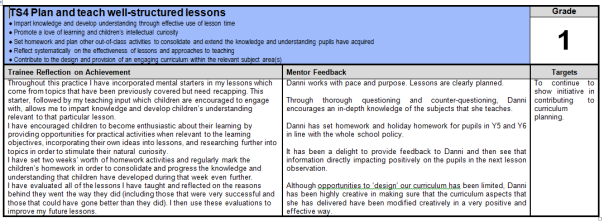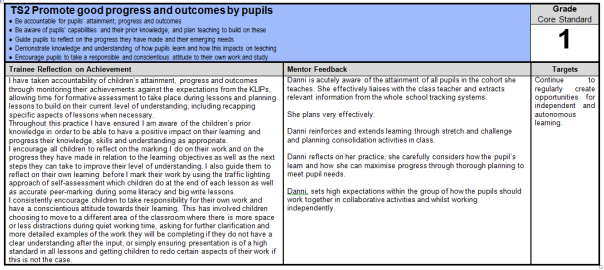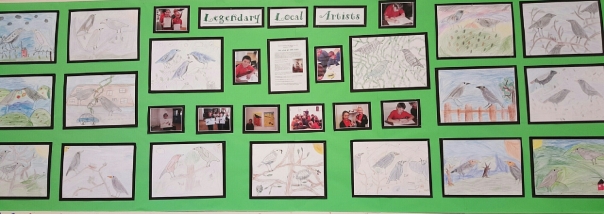
This extract from my PP2 report form highlights the progress noted by my mentor, and headteacher, in regards to TS4. He often commented on my effective questioning and counter-questioning to encourage an in-depth understanding from all children during my lessons. I also found that this use of questioning during lessons enabled me to effectively identify and resolve misconceptions that had been formed.
The implementation of feedback and targets given from observations allowed me to greatly improve my teaching and effectively enhanced the children’s learning that took place during my time at this school. My target for this standard of contributing to curriculum planning was decided upon due to the limited opportunities for this to happen in this particular setting due to the use of schemes. However, as commented on by the headteacher, I ensured that I delivered the curriculum content in a creative and effective way to enable the children to enjoy their learning whilst making clear progress in their understanding. This is an element of teaching that will contribute to allowing me to achieve this target in my future practice.

